Genus species:
Falco sparverius
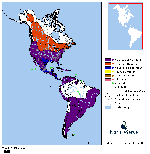
Enlarge Map
External Sites:
Cornell
USGS
Image Search
Commonly seen perching on wires along roads. (Commonly seen between Velarde and Alcalde)
Note dark vertical bars on cheek.
Sometimes seen "kiting" over fields while hunting. (A kiting bird is flapping while not moving up, down or forward.)
Male is pictured.
Number of Individuals Observed:1
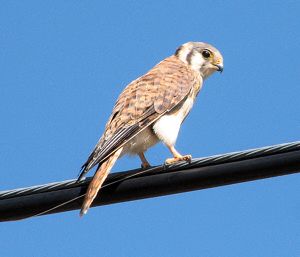
Rinconada
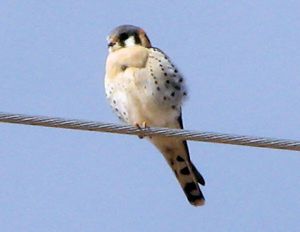
Rinconada
Zenaida macroura
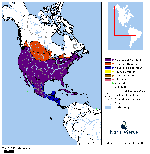
Enlarge Map
External Sites:
Cornell
USGS
Image Search
Note long, pointed tail which shows white edges when landing.
Call is a soft, slow "who-AH, who, who, who" heard during the day. (Commonly mistaken for an owl. Note: Owls usually do not call during daylight hours)
Number of Individuals Observed:5
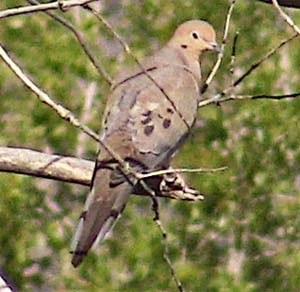
El Bosque
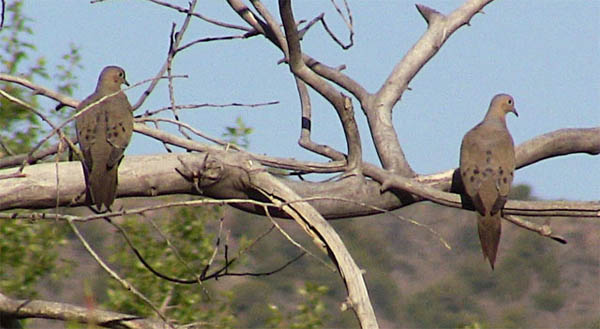
El Bosque
Archilochus alexandri
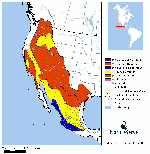
Enlarge Map
External Sites:
Cornell
USGS
Image Search
One of only two hummingbirds that regularly breed here.
In the right light, male's throat shows purple below, black above.
Often appears more slender and vertical than the Broad-tailed Hummingbird.
Male is pictured. Female has plain throat.
Number of Individuals Observed:1
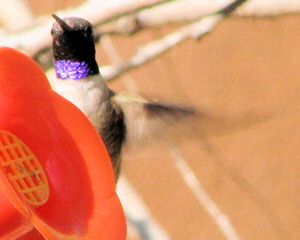
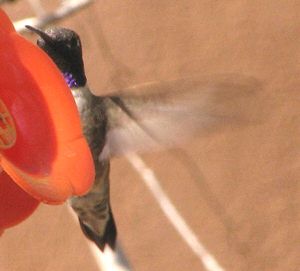
Picoides villosus
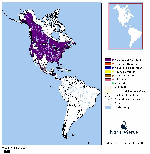
Enlarge Map
External Sites:
Cornell
USGS
Image Search
Commonly distinguished by its large bill which is often as long as the bird's head from front to back.
Number of Individuals Observed:1
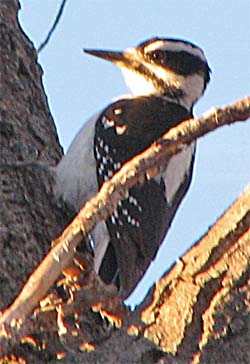
El Bosque
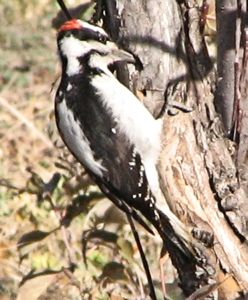
El Bosque
Contopus sordidulus
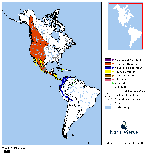
Enlarge Map
External Sites:
Cornell
USGS
Image Search
A fairly plain flycatcher that says its name: a buzzy "pee-wee".
In some postures can look like an Empidonax genus flycatcher, without the characteristic Empidonax white eye-ring.
Usually perches in trees or posts at mid to low levels.
Number of Individuals Observed:2
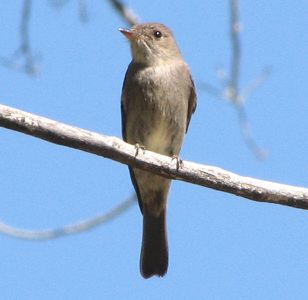
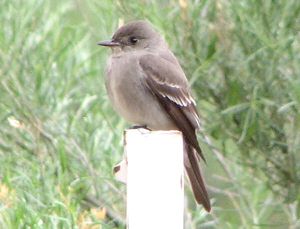
Sayornis saya
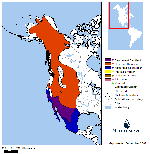
Enlarge Map
External Sites:
Cornell
USGS
Image Search
Usually seen on posts or single stalk plants in agricutural areas "hawking" insects.
It's call is a slow, plaintive, downward slurred "pee-ee". At close range, may hear "pit,pee-ee".
Distinctive peach-colored belly.
This species regularly builds nests under people's portales.
Number of Individuals Observed:2
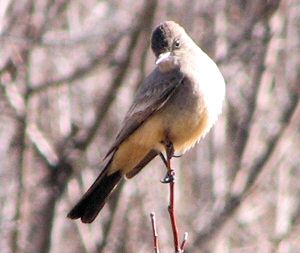
Rinconada
Myiarchus cinerascens
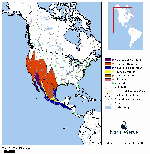
Enlarge Map
External Sites:
Cornell
USGS
Image Search
Number of Individuals Observed:7
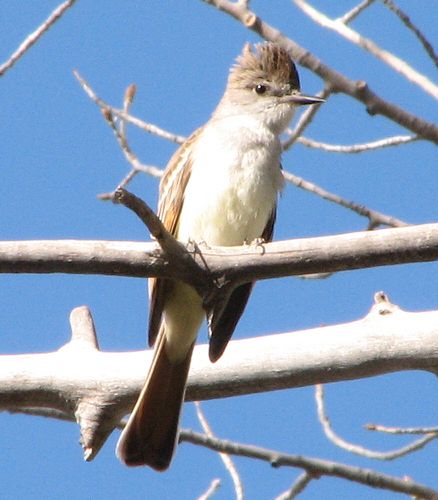
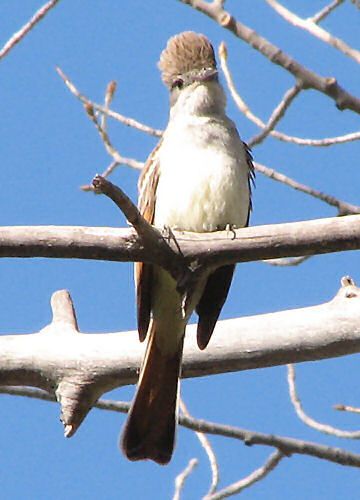
Vireo plumbeus
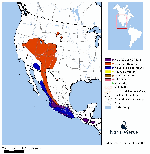
Enlarge Map
External Sites:
Cornell
USGS
Image Search
Number of Individuals Observed:1
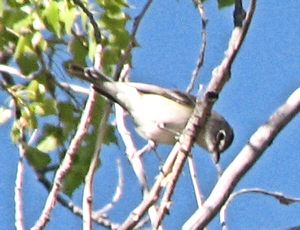
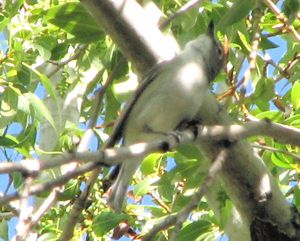
Corvus corax
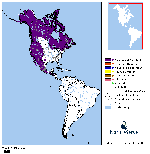
Enlarge Map
External Sites:
Cornell
USGS
Image Search
By sound, a throaty chortle or shout.
In flight, the tail often appears wedge shaped.
Ravens are often solitary, but sometimes appear with a few other individuals.
Often soars like a hawk. Crows do not.
Bill is thick and heavy. The throat is shaggy compared to the Crow.
Breeding pairs perform synchronized flight high overhead.
Number of Individuals Observed:2
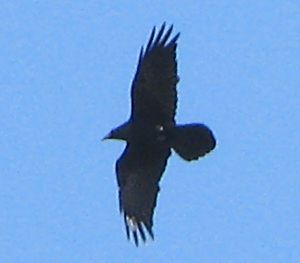
El Bosque
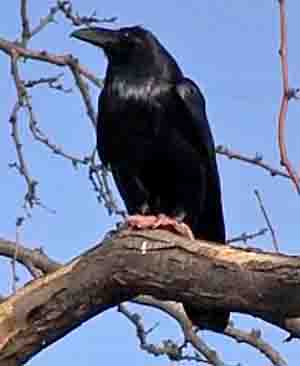
Camino de los Marquez, Santa Fe
Stelgidopteryx serripennis
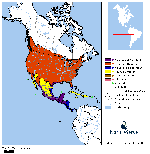
Enlarge Map
External Sites:
Cornell
USGS
Image Search
Number of Individuals Observed:2
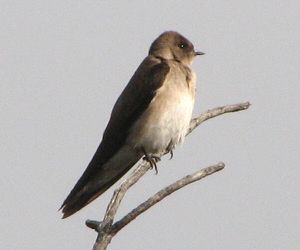
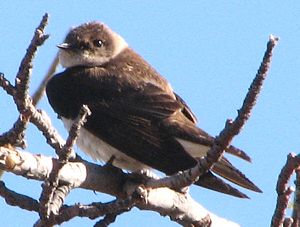
Baeolophus ridgwayi
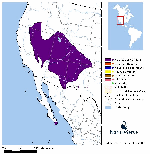
Enlarge Map
External Sites:
Cornell
USGS
Image Search
Some of its vocalizations similar to Chickadee.
Often detected by soft woodpecker-like tapping on branches.
Number of Individuals Observed:1
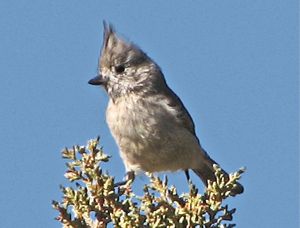
Psaltriparus minimus
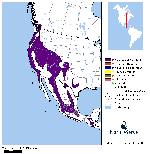
Enlarge Map
External Sites:
Cornell
USGS
Image Search
Usually travels in groups of 10-20 individuals, constantly moving from bush to bush feeding.
Flocking birds constantly make varied twittering sounds.
Number of Individuals Observed:2
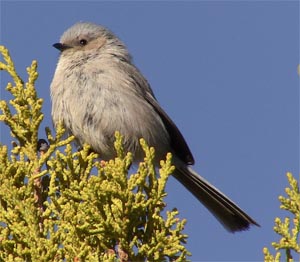
Camino Lejo, Santa Fe
Sitta carolinensis
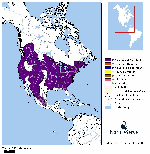
Enlarge Map
External Sites:
Cornell
USGS
Image Search
Relatively long, sharp bill.
Only local species that walks down tree trunks upside down.
Often heard at a distance: Rapidly repeated nasal "huh". Usually 5-8 sounds, all at same pitch.
Number of Individuals Observed:1
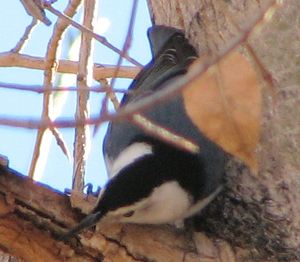
El Bosque
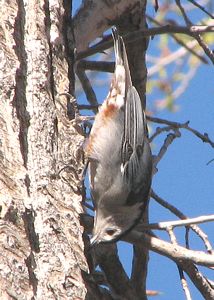
El Bosque
Salpinctes obsoletus
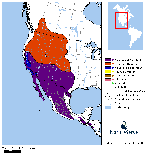
Enlarge Map
External Sites:
Cornell
USGS
Image Search
Number of Individuals Observed:1
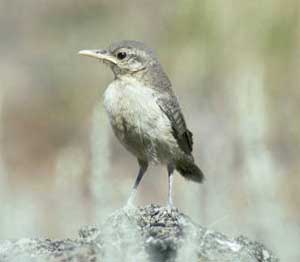
Photo: Dave Menke USFWS California
Thryomanes bewickii
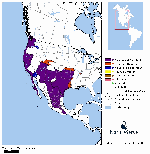
Enlarge Map
External Sites:
Cornell
USGS
Image Search
Most often seen at transition from Piñon-Juniper to agricultural or riparian areas.
Song similar to Song Sparrow, but is "buzzier" and consistently ends on a clear trill.
Number of Individuals Observed:2
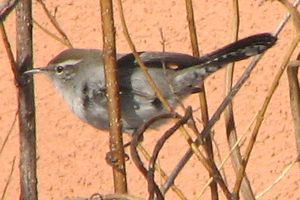
El Bosque
Polioptila caerulea
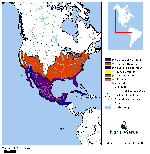
Enlarge Map
External Sites:
Cornell
USGS
Image Search
Number of Individuals Observed:3
Sialia mexicana
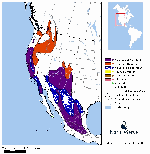
Enlarge Map
External Sites:
Cornell
USGS
Image Search
During breeding season, colors more intense than shown here.
Female (lower photo) has blue in wings, but appears gray from front with a light buffy breast.
Note white eye-ring.
Number of Individuals Observed:2
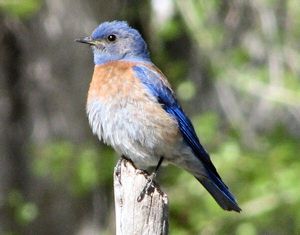
El Bosque
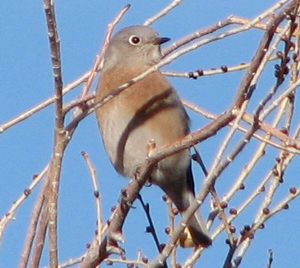
El Bosque
Turdus migratorius
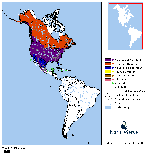
Enlarge Map
External Sites:
Cornell
USGS
Image Search
Note reddish breast, light colored bill and large white split eye-ring.
Number of Individuals Observed:4
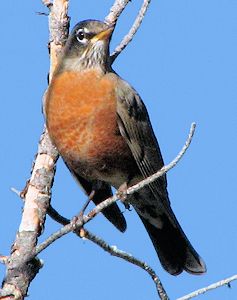
El Bosque
Vermivora virginiae
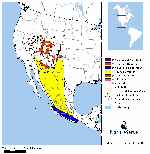
Enlarge Map
External Sites:
Cornell
USGS
Image Search
Number of Individuals Observed:3
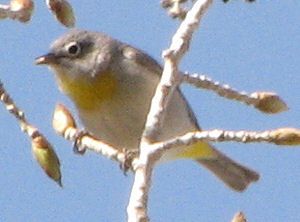
Ojo Sarco
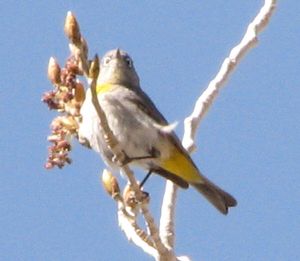
Ojo Sarco
Dendroica nigrescens
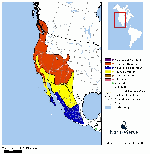
Enlarge Map
External Sites:
Cornell
USGS
Image Search
Number of Individuals Observed:1
Pipilo maculatus
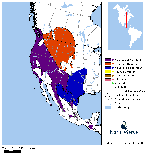
Enlarge Map
External Sites:
Cornell
USGS
Image Search
Occasionally you will see one at the edge of the road or briefly flying from one shrub to the next.
However, they regularly produce a contact call, a low growl.
Hear Contact Call
If you listen for that call and follow it, may be rewarded with a view of this lovely bird with a red eye.
Note white breast with rufous (reddish) flanks.
Lower Photo shows bird in its preferred habitat.
Number of Individuals Observed:11
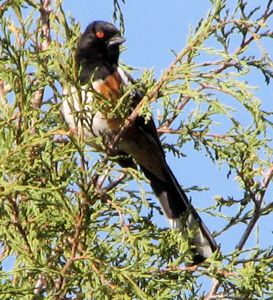
Arroyo la Mina
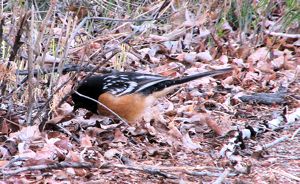
El Bosque Enlarge
Carpodacus mexicanus
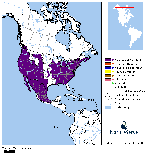
Enlarge Map
External Sites:
Cornell
USGS
Image Search
Male (upper picture) is easily identified by red plumage on head, throat, breast and rump.
Female (lower photo) does not have red.
Both sexes have streaking on breast, belly and flanks.
Number of Individuals Observed:3
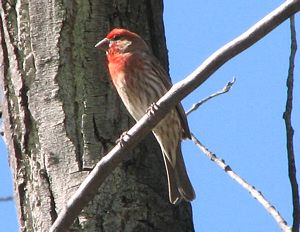
Arroyo La Mina
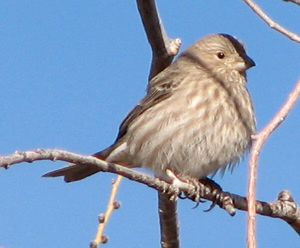
Arroyo La Mina
Carduelis psaltria
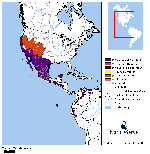
Enlarge Map
External Sites:
Cornell
USGS
Image Search
Number of Individuals Observed:9
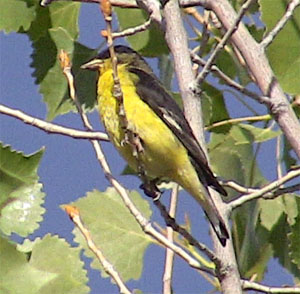
Dixon - June 7, 2014
